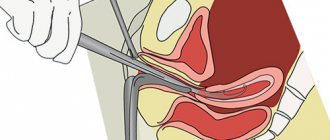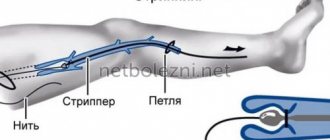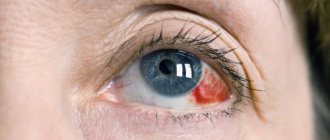Use during pregnancy
The drug is a direct anticoagulant.
By acting on antithrombin 3, the drug counteracts the formation of blood clots. Platelet synthesis decreases, which reduces the possibility of white blood clots forming on the vascular endothelium. The release form of Heparin is an injection solution, as well as gel and ointment. 1 ml contains 5 thousand international units of the active substance - sodium heparin. The use of Heparin injections in the stomach of patients to thin the blood is carried out strictly according to indications. In this case, it is imperative to follow the dosage and schedule of subcutaneous administration of the drug. The medicine is used in the treatment of the following pathological conditions:
- cardiac arrhythmia;
- early period of myocardial infarction;
- thrombosis of the superficial and deep veins of the lower extremities;
- pulmonary embolism;
- endocarditis of non-bacterial etiology;
- unstable angina.
However, there are situations where the administration of Heparin can be fatal. The drug is strictly contraindicated in such conditions.
- Hypersensitivity to the drug.
- Thrombocytopenia, including those induced by taking anticoagulants.
- Encephalomalacia demonstrated by brain imaging techniques.
- Visceral carcinoma.
- Severe damage to the pancreas, liver, kidneys.
- Bleeding of any location (open gastric ulcer, hemorrhagic stroke, hemoptysis, hematuria).
- Stage 3 hypertension.
- Threatened abortion.
- Drinking large doses of alcohol.
Also, the drug cannot:
- administer intramuscularly;
- for acute and chronic leukemia, aplastic anemia;
- with the development of acute cardiac aneurysm;
- during operations on the brain or spinal cord, eyeball, inner ear;
- with bacterial endocarditis, diabetes mellitus, pulmonary tuberculosis in a patient.
For patients using Heparin, conduction anesthesia is contraindicated during elective surgical operations. This is due to the high likelihood of developing epidural or spinal hematomas, which leads to the development of long-term, and sometimes permanent, paralysis.
According to studies, the drug does not penetrate the placenta, which makes it possible to use it in the 2nd and 3rd trimesters of pregnancy. When prescribing Heparin, it is recommended to include calcium-containing medications in the combination.
Compliance with the accuracy of dosages and administration schedule minimizes the risk of side effects. The dose for a pregnant woman is selected individually, taking into account coagulogram parameters and body weight, with mandatory correction every 7-10 days. During lactation, it is recommended to switch the baby to formula feeding.
Heparin for children
Heparin is approved for use in pediatric practice. The treatment regimen is calculated per kilogram of body weight. The initial dose is 50 international units. Infants are prescribed two to ten units per hour intravenously. For children in the first 28 days, it is possible to use the medication subcutaneously, dividing the daily dose into 4-6 injections.
Taking into account the possibility of developing fatal side effects, it is recommended to read the instructions for use of the drug. Heparin is prescribed in the treatment of various diseases. The route of administration, as well as the dosage and duration of treatment, are determined only by the attending physician. It is mandatory to monitor the patient's condition through periodic examination of the blood coagulation system.
To rationally select the dose of Heparin, one must be guided by the following circumstances:
- presence of concomitant diseases;
- high risk of unwanted drug interactions;
- potential possibility of surgical intervention.
It is considered standard to prescribe the drug in clinical practice intravenously at a dose of 5000 units followed by infusion of 1000 units. However, according to new research, a bolus of 80 units of medication is safer during a heart attack. It is also recommended to use normograms for the use of Heparin.
Individual characteristics of the body may change the expected response. The result of the injection is influenced by:
- weight – less than 70 kg;
- age – over 64 years old;
- female;
- Negroid race;
- smoking.
Therefore, it is necessary to take these factors into account to reduce the possibility of side effects in the patient.
There are benefits to using Heparin as an injection into the abdominal area. Firstly, the patient can administer the injection himself if the technique is correct. Secondly, using a special syringe with a thin needle, the injection becomes absolutely painless. When administered subcutaneously, the effect develops gradually, which reduces the risk of complications from the use of the drug and prolongs the main effect.
During treatment, it is possible to replace Heparin with medications that have similar effects. You can find the following analogues on the pharmacy counter:
- Heparin Sodium Brown;
- Troparin;
- Enixum;
- Fraxiparine;
- Tsibor.
Prepare everything in advance in one place. Before you continue, make sure you have:
- the required dose of your medicine. Typically, IVF drugs are contained in syringe pens with markings and a supply of sterile short needles with fine calibration;
- a suitable syringe with a sterile needle tip. Mostly 0.5, 1 or 2 cubic meters are used;
- container for safe disposal of consumables;
- alcohol or vodka;
- sterile gauze pad (usually 2 x 2 cm);
- clean towel (napkin).
Some medication bottles contain only one dose, while others contain enough for multiple treatments.
Find a clean, bright, comfortable place where you won't be disturbed. Many women carry out the procedure in the bathroom or kitchen. When performing a subcutaneous injection, the less you come into contact with non-sterilized materials, the better. Having all the tools laid out on a towel in advance makes the process quick, easy and more hygienic.
Actions:
- Wash your hands with soap and dry thoroughly.
- Fill the syringe with the required dosage of medicine, use the plunger of the syringe to squeeze out the air so that a few drops of medicine appear from the needle. For stimulation during IVF, medications are mainly prescribed in special pen syringes with markings. Gently turn the knob to the selected dose. Remove the sterile needle from the individual container and insert it.
- Free the injection area from clothing. Using an alcohol wipe, clean the injection site by gently wiping the selected area. Let it air dry. If you find that the skin is irritated, bruised, or hard, choose a different area.
- Take the syringe. Hold it firmly, like a pencil, in your dominant hand. Make sure you can easily reach the plunger.
- With your free hand, gather about 3.8-5.1 cm of skin between your thumb and index finger. You should get a small mound. By grouping the skin, you create a thicker area for injection, ensuring the drug is injected into the fat rather than the underlying muscle. As you collect the skin, you should be able to feel the difference between the soft top fat layer and the harder muscle tissue. Subcutaneous medications are not intended for injection into muscles, and incorrect injection may result in bleeding.
- With slight tension, immerse the needle completely into the skin. Typically, it should be inserted at a 90-degree angle (straight, up and down) to inject the medication into the fatty tissue. Act quickly and confidently so as not to be nervous. Tension can cause the needle to not go in or slowly pierce the skin, causing increased pain. Apply even pressure to the plunger until the medication is completely injected. Use one controlled, steady movement.
- Then carefully place a piece of gauze or a cotton ball on the side of the syringe. Wait a few seconds and remove it while covering the area with cotton wool. Hold the alcohol pad for a few seconds. If blood appears, hold it until the bleeding stops.
- Dispose of the needle and syringe safely. It is very important to ensure that consumables are not disposed of through “normal” garbage, as they can be reused by antisocial elements of society and spread potentially fatal diseases.
Depending on the indications, the injection can be given in different places. Usually the doctor tells you exactly where to inject. The area is also indicated in the annotation for the medicine. If we consider injections during ART procedures, then many clinics prohibit performing medical procedures at home. A woman must arrive at the appointed time and get an injection on a first-come, first-served basis.
- belly: at or below the navel, about two centimeters from it;
- arm: back or side of shoulder;
- leg: front of thigh;
- buttock: upper right part.
Injections in the stomach are especially often prescribed during IVF. It is best to carry out manipulations at the same time, alone, in a place where there will be no distractions. A kitchen or bathroom is best.
Oddly enough, medical manipulation is fraught with many difficulties. You may become infected (from using an unsterile syringe), break a needle in the skin, or damage a nerve. In addition, due to contact with a blood vessel, bruises and lumps often occur in the injection area. You should consult a doctor if:
- after the injection, fever, sneezing or cough develops;
- swelling or bruising at the site of manipulation does not disappear;
- there was a rash, itching or shortness of breath;
- the mouth, lips or face are swollen.
The No. 1 drug most often prescribed to patients for abdominal injections is heparin. But there are other drugs that are no less effective:
- Flenox
- Clexane
- Fragmin
- Nadroparin
- Fraxiparine
- Novoparin and others.
These medications prevent the formation of platelets and keep the blood in a normal state.
- For the treatment of people who have had a myocardial infarction.
- After heart surgery to remove blood clots.
- Increase blood viscosity.
- Increase blood microcirculation.
- Remove blood clots from deep veins.
- For the treatment of atrial fibrillation.
- Treatment of asthma.
- For prevention, etc.
- acute coronary syndrome due to myocardial infarction;
- thromboembolism affecting the vessels of the eyes, respiratory system and brain;
- atrial fibrillation causing embolism;
- for the prevention of pulmonary embolism in the period after surgery;
- blood transfusion from donor to patient;
- unstable forms of angina;
- heart defects;
- rheumatism;
- jades;
- asthma.
- allergy to the main active ingredient of the drug;
- a blood disorder characterized by a low platelet count;
- severe pancreatic dysfunction;
- internal or external bleeding;
- arterial hypertension;
- serious pathologies of the liver and kidneys;
- alcoholism;
- threat of miscarriage.
In what cases are injections given in the stomach?
Every person in the world has encountered such an unpleasant procedure as an injection.
But not everyone knows that there are injections that are administered into the abdominal area. The purpose of the injections is to reduce blood clotting and protect yourself from a number of diseases (renal dysfunction, diabetes, dehydration, etc.).
If there is a need for treatment with this method, then do not be afraid. It is painless and everyone can do it on their own.
Medicines used by injection
The No. 1 drug most often prescribed to patients for abdominal injections is heparin. But there are other drugs that are no less effective:
- Flenox
- Clexane
- Fragmin
- Nadroparin
- Fraxiparine
- Novoparin and others.
These medications prevent the formation of platelets and keep the blood in a normal state.
Why do they give an injection in the stomach?
- For the treatment of people who have had a myocardial infarction.
- After heart surgery to remove blood clots.
- Increase blood viscosity.
- Increase blood microcirculation.
- Remove blood clots from deep veins.
- For the treatment of atrial fibrillation.
- Treatment of asthma.
- For prevention, etc.
Firstly, giving an injection on the stomach is convenient, since the patient himself controls the process and inserts the needle. Secondly, there is an anterolateral wall on the abdomen where the syringe is inserted.
Due to this, a person does not feel pain.
After the drug has entered the muscle, you must wait 30 minutes before the drug begins to act. The effect of the injection lasts 6 hours.
How to inject in the stomach
First of all, you should ask the nurse to show in practice how to properly give an injection in the stomach.
Before you begin the injection, you must choose the correct puncture site. You need to step back from the navel to the right or left approximately 2-4 cm and make a puncture. But for the first time it can be difficult to navigate by eye.
Therefore, you can draw a figure eight, where the navel will be the center, and the two hemispheres from the figure eight will be the place for the injection. Use your thumb and forefinger to grab the skin of your abdomen (only the top layer of muscle).
Insert the needle 2/3 way, at an angle of 30˚-45˚.
It is worth taking a responsible approach to purchasing all the necessary medical supplies. For example, an insulin syringe is ideal for injections. Because it has the thinnest possible needle. You should not buy a cheap analogue of the medicine; it is better to use a doctor’s prescription.
The time for injections should not be changed.
Preparatory stage
What you need to do to get a high-quality injection and not harm yourself:
- Empty and thoroughly wipe the area where the medications will be stored. Or lay down a clean towel.
- Wash your hands with any detergent or wipe with alcohol. If desired, you can wear gloves, which should also be wiped with alcohol.
- Remove the syringe from its packaging and, without removing the cap, set it aside.
- Open the ampoule. Holding the ampoule in your left hand, take the syringe in your right. Take medicine. Make sure there is no air in the syringe.
- Place the syringe aside and close the cap. Take a cotton swab, moisten it with alcohol and wipe the puncture site.
- After removing the needle, press the swab firmly against the skin. Don't rub.
Monitor your feelings during the procedure. Control the speed of drug administration.
Precautionary measures
Heparin and other analogues may not be combined with some medications. Injections will not give the desired effect if you take allergy pills, vitamin C, some antibiotics, and antidepressants in parallel with them. Anticoagulants, on the contrary, enhance the effect.
Pregnant and lactating women should avoid injections, as there have been cases of premature birth, miscarriages, and the development of osteoporosis in women.
The heparin solution may turn yellow. This does not affect the quality and properties of the medicine.
Do not use heparin if:
- tumors;
- high blood pressure;
- peptic ulcers and gastrointestinal disorders;
- after childbirth;
- after operations, if they were not performed on vessels.
For what diseases is it recommended to give injections in the stomach?
There are a number of diseases for which the use of abdominal injections is recommended:
- diseases of the joints and muscles - rheumatism;
- asthma;
- heart disease: defect, angina, arrhythmia;
- kidney disease - nephritis, glomerulonephritis, circulatory disorders;
- direct blood transfusion;
- atrial fibrillation;
- thrombosis and embolism.
Treatment of these diseases with this method allows you to relieve painful symptoms or completely recover from these ailments.
Can there be consequences and complications?
In order to avoid unwanted side effects and complications, you must follow the basic rule - use the correct dosage. After each procedure, listen carefully to your body. All medications affect each person differently.
Source: https://BoliGolovnie.ru/varikoz/v-kakih-sluchajah-delajut-ukoly-v-zhivot.html
Description of the medicine
The main effect of Heparin injections is to prevent pathological blood clotting by directly affecting the enzyme antithrombin III. Once the product enters the body, platelet synthesis is significantly reduced, which allows maintaining normal blood condition. The anticoagulant is widely used in medical practice both as a prophylactic drug and for the full treatment of many diseases.
Indications for use:
- vascular complications after surgery;
- reduction of blood viscosity in devices intended for artificial blood supply;
- getting rid of blood clots formed during heart surgery;
- treatment of diseases that provoke a decrease in blood microcirculation throughout the body;
- as a prophylactic agent among patients prone to blood clots;
- therapy for myocardial infarction;
- treatment of deep vein thrombosis;
- increased D-dimer levels during pregnancy;
- atrial fibrillation and some other pathologies.
Heparin is used as a stand-alone drug or in combination with medications of other groups, for example, Fibrinolysin, Streptodecase and others.
These medications prevent the formation of platelets and keep the blood in a normal state.
The dosage is selected by the leading physician on an individual basis. The specialist takes into account test results, medical history, features of the course of the disease and some other characteristics of the patient.
Procedure
How to give a subcutaneous injection? Injections are given straight at a 90-degree angle or at a 45-degree angle. Rule: Inject at a 90-degree angle if you can grasp 5cm of skin between your thumb and first finger. If only 2.5 cm - at an angle of 45°. Procedure:
- Wash your hands with soap and water. Dry with a towel.
- Open an alcohol wipe or soak a cotton swab with vodka: wipe the area of the abdomen where you plan to inject. Wait a few seconds for it to dry.
- Draw the medicine into the syringe. Oily progesterone needs to be warmed, but not in boiling water! For drugs in a syringe pen, you need to select the dosage on the tube itself with a twisting motion. Insert a disposable needle.
- Hold the syringe like a dart with the thumb and first three fingers of either hand. Pull the cap off the needle with your other hand.
- Take as much of the skin as possible plus the underlying fat. Do not inject the drug into an area that is bruised, red, or hard.
- Hold the barrel of the syringe firmly and use your wrist to push the needle into the skin. Penetration must be fast. Once the needle is all the way down, press the plunger slowly to inject the medicine.
- Remove the needle at the same angle at which you inserted it. Gently wipe the injection area with an alcohol wipe.
It is important to properly dispose of waste material. Purchase a special hard plastic container or glass jar with a lid. Make sure that the syringe and needle fit easily into the container and cannot pierce it.
To understand why Heparin is injected, let’s find out what the main pharmacological features of this substance are. In a healthy person, heparin, together with fibrinolysin, is part of the body's natural anticoagulant system. The substance prevents the formation of platelets, reduces their adhesion, and catalyzes the process of dissolving blood clots.
Important! Use of the drug among patients with reduced blood clotting may lead to bleeding and other dangerous consequences.
In what cases are injections in the stomach needed?
Injection of a drug into the area of the anterior abdominal wall has been used in medicine for a long time. An injection in the stomach is preferable to other places for diseases of the blood vessels (varicose veins, atherosclerosis), heart (ischemia), and those associated with metabolism (diabetes). Injections in the abdomen are used during ART (assisted reproductive technologies) procedures. Their advantages:
- convenience (the patient can inject himself);
- the ability of subcutaneous fat to temporarily deposit (hold, store) a drug and distribute it throughout the body through the blood, lymphatic vessels and nerve endings located in it;
- insertion of a needle and medication into the anterolateral area does not cause pain.
Fears that after being bitten by a stray animal you will have to take the notorious 40 injections are unfounded. This prevention scheme is no longer used; only a few injections are performed at intervals, moreover, in the forearm.
What kind of injections are given in the stomach?
Injections into the anterior abdominal wall are performed subcutaneously.
During the implementation of the IVF (in vitro fertilization) protocol, hormonal drugs (Pregnyl, Gonal-f, Diferelin) and compounds that stabilize d-dimers are injected into the abdominal area, which affect implantation.
In case of increased blood clotting, heparin and its derivatives are injected into the stomach. When ingested, the active substance thins the blood, produces vasodilating and anti-allergenic effects. Heparin is not produced in tablet form; its administration into the abdominal area is justified by clinical studies.
Particular delicacy is shown to pregnant women, giving them injections in the stomach for a beneficial effect on the body of the mother and child, preventing miscarriage and premature birth.
Medications such as Clexane and its analogues (Fraxiparin, Warfarin, others), prescribed to expectant mothers with a high risk of blood clots, can reduce this danger.
Injections are also prescribed as preventive measures.
Injections in the stomach are prescribed according to indications. They are used in cardiology, for diabetes mellitus, in the postpartum period, and for intensive therapy of many other diseases.
Why are these injections given in the stomach?
A subcutaneous injection into the abdomen with the introduction of various medications has shown its effectiveness in distributing medicinal solutions in the body through the subcutaneous adipose tissue.
This form of therapy is preferable because the effect of the substance will last longer, although the effect occurs slightly later compared to other types of injections.
The subcutaneous fat layer has a dense vascular network, so medicinal compositions administered subcutaneously have an effect faster compared to oral administration - they bypass the gastrointestinal tract, entering directly into the bloodstream.
Such substances are quickly absorbed into loose subcutaneous tissue without causing any harmful effects on it.
To obtain a sustainable effect, some medicinal formulations must be administered repeatedly. Course therapy is carried out on the basis of Decapeptyl, Puregon, Follistim, Heparin, Clexane and a number of other drugs. In a hospital setting, the injections will be performed by healthcare workers, but at home it will not be difficult to inject yourself.
Injections into the abdomen are not painful, since they only affect the subcutaneous fat layer, and this is another argument in their favor.
What is needed for injections
When administering a medicinal solution, you must strictly follow the dosage, each time using a new syringe and a fresh portion of the drug. It is advisable to eliminate the need to transfer the syringe from one hand to the other (to avoid compromising the sterility of the needle).
When prescribing several injections, the injection sites should be located at a distance of at least 3 cm from each other to prevent bruising and infiltrates.
More information about the syringe
Subcutaneous injections are made with a disposable syringe designed for 2 ml of liquid. Other syringes can be used, but they must be sterile.
Ready-made syringes with solution from the pharmacy should only be unpacked and used immediately.
The use of an insulin pen is also permitted.
Choosing a needle for an injection
The needle for injection into the abdomen should be chosen the thinnest and no longer than 1.5 cm. It is this that is capable of delivering the medicinal solution into the subcutaneous tissue of the abdominal wall, from where it will gradually spread throughout the body. Insulin needles can be used, which also meet the requirements for performing injections into the anterolateral peritoneal wall.
Selecting the injection site and examining the skin
Choosing the injection site is easy. You need to mentally draw a figure eight with the center in the navel and “land” with the needle in the center of one of the circles of the imaginary number.
The next injections are placed 3-4 cm away from the previous one, in the center of another figure eight, and so on. Injections are made on a clean skin surface - without wounds, visible spots, warts and moles, if any.
How to give a subcutaneous injection in the stomach (instructions)
The syringe with the prepared solution should be taken with the right hand, ensuring that the thumb is freely fixed on the piston.
At this time, with your left hand you need to make a fold (about 2.5 cm wide) on your stomach, squeezing and pulling it as far as possible. This frees up a place for the injection, and the needle is inserted into it to 2/3 of its length.
The angle of the inserted needle is 30-45 degrees. Then, by pressing the piston with your thumb, the contents of the cylinder are injected.
If more than 2.5 cm of skin is involved, the injection can be made at an angle of 90 degrees, that is, strictly perpendicular to the area of the abdomen. When making a fold, it should be taken into account that it is necessary to capture only the fat layer, where the medication is then injected, and not into the more elastic muscle layer. Injections of this type are performed subcutaneously and not intramuscularly.
Some medications require heating before injection, for example, oil progesterone. It doesn’t matter how it is brought to the required temperature (quickly or slowly), but this is not done in boiling water.
Some medicines are supplied already in a syringe pen. The injection solution does not need to be prepared or drawn up; it is already contained in the cylinder. The manipulation is carried out in the same way as with a regular syringe, with the only difference being that the dosage of the medicine must be selected by scrolling the knob along the scale marked on the injector tube.
Removing the needle from the body after an injection must be done at the same angle at which it was inserted.
Sometimes your doctor may recommend dividing the dose of medication into two parts and injecting them into different areas. The second injection is performed in the same way as the first. The injection technique does not in any way affect the pharmacological effect of the drug.
After the procedure, the injection site is disinfected with an alcohol-containing wipe or cotton wool soaked in alcohol.
It is easy to do a subcutaneous injection in the abdominal area yourself. If the patient is afraid that he will not cope, the manipulation will be performed by an employee of the treatment room of the medical institution.
What are the risks of subcutaneous injection
No matter how simple the procedure of subcutaneous injection into the abdomen may seem, it is important to adhere to the described rules. This will help prevent unwanted consequences:
- needle entering a blood vessel;
- nerve damage;
- the occurrence of bruising and compaction at the injection site.
These “misses” are not dangerous to health. But if fever, rash, respiratory symptoms, or shortness of breath appear, you should definitely see a doctor. He will give recommendations on how to eliminate such a reaction to medications taken, and prescribe therapeutic and preventive procedures.
Professional help will be required if the patient experiences redness, swelling, or throbbing pain in the injection area. These symptoms may indicate a developing abscess (boil). If you go to the hospital on time, you can avoid surgery.
Redness, swelling, itching, and less commonly conjunctivitis or runny nose are symptoms of an allergy. If such manifestations occur, you should consult a doctor immediately.
Source: https://oVakcine.ru/inekciya/v-kakih-sluchayah-nuzhny-ukoly-v-zhivot
How long does it take to work?
Similar article: Instructions for Heparin tablets
After entering the body, the effect of Heparin begins quite quickly, but the effect is relatively short-lived. When administered intravenously, the effect occurs almost immediately and is observed for 4–5 hours. After intramuscular injection, the effect occurs within half an hour, its duration is 6 hours. If Heparin is used subcutaneously, inhibition of blood clotting is observed after 60 minutes and lasts from 6 to 12 hours.
The first option is used primarily for the treatment of life-threatening conditions in humans, such as thrombosis, embolism, myocardial infarction and other severe pathologies. Subcutaneous and intramuscular injections are used in medical practice for long courses aimed at the prevention and treatment of diseases characterized by increased blood viscosity.
After entering the body, the effect of Heparin begins quite quickly, but the effect is relatively short-lived. When administered intravenously, the effect occurs almost immediately and is observed for 4–5 hours. After intramuscular injection, the effect occurs within half an hour, its duration is 6 hours. If Heparin is used subcutaneously, inhibition of blood clotting is observed after 60 minutes and lasts from 6 to 12 hours.
Why are heparin injections given in the stomach: instructions, why injections are given - About the judgments
In this publication, we will talk about the purpose of Heparin injections in the stomach, what the drug is needed for, and what contraindications it has. You will learn about the possibility of giving injections to pregnant women and nursing mothers. The article also contains a list of drugs similar to Heparin that have the same therapeutic effect.
What are heparin injections in the stomach for?
» Timely treatment
Insufficient fluid intake into the body, kidney disorders, diabetes mellitus, diseases accompanied by dehydration and many other factors often lead to such a pathological condition in humans as increased blood clotting. Treatment in this case is carried out with the help of anticoagulants, a prominent example of which is the drug Heparin. In the article we will look at why Heparin injections into the stomach and what are the features of such therapy.
Source: https://med-lk.ru/medicamenty/dlya-chego-delayut-ukoly-geparina-v-zhivot-instruktsiya-zachem-kolyut-inektsii.html
Features of the procedure
How to give injections yourself? The technique for administering Heparin into the abdomen by injection is quite simple. To do this, the patient must perform the following actions:
- Wash your hands thoroughly with soap and wear sterile gloves.
- Prepare an ampoule with medicine, a syringe, cotton wool, and a disinfectant.
- Open the ampoule and draw the drug into the syringe.
- Wipe the skin with cotton wool or a bandage soaked in an alcohol solution or any other disinfectant.
- At a distance of 4 cm from the navel, pinch a fold of skin and insert a needle into it. The injection should be given slowly, listening to your feelings.
- After administering the medicine, you need to pull out the needle and apply a cotton swab with a disinfectant solution to the injection site.
The injection should be given in strict accordance with the instructions
Important! If the patient is giving an injection for the first time, it is advisable to do it under the supervision of a medical professional.
A subcutaneous injection is a shot given into a fatty area under the skin (as opposed to an intravenous injection, which is injected directly into the bloodstream). An injection into the abdominal area is mainly prescribed to patients undergoing an IVF protocol and undergoing hormonal medications.
Prescriptions for the drugs usually come with detailed instructions for proper use.
What are the risks of subcutaneous injection
No matter how simple the procedure of subcutaneous injection into the abdomen may seem, it is important to adhere to the described rules. This will help prevent unwanted consequences:
- needle entering a blood vessel;
- nerve damage;
- the occurrence of bruising and compaction at the injection site.
These “misses” are not dangerous to health. But if fever, rash, respiratory symptoms, or shortness of breath appear, you should definitely see a doctor. He will give recommendations on how to eliminate such a reaction to medications taken, and prescribe therapeutic and preventive procedures.
Professional help will be required if the patient experiences redness, swelling, or throbbing pain in the injection area. These symptoms may indicate a developing abscess (boil). If you go to the hospital on time, you can avoid surgery.
Redness, swelling, itching, and less commonly conjunctivitis or runny nose are symptoms of an allergy. If such manifestations occur, you should consult a doctor immediately.
Side effects
Any substance with a strong and proven effect can have a number of side effects. Heparin is no exception. The most common negative conditions associated with taking the drug include:
- diarrhea syndrome;
- hematomas and hemorrhages at injection sites;
- distortion of taste sensations;
- decreased appetite;
- osteoporosis and pathological fractures associated with long-term therapy;
- development of allergic phenomena on the skin, accompanied by itching.
For minor bleeding, it is recommended to temporarily stop administering the drug and adjust the dose of the drug together with your doctor. If the bleeding is profuse and poses a threat to life, then the drug is immediately discontinued and 1% protamine sulfate is prescribed intravenously, given that 1 mg of antidote neutralizes 85 units of Heparin.
When prescribing complex therapy, the interaction of drugs must be taken into account. The development of undesirable side effects may require adjustment of the dose of Heparin.
Caution should be exercised when using combinations with the following medications:
- anticoagulants of direct and indirect action;
- antihistamines;
- cardiac glycosides;
- tetracycline and penicillin antibiotics;
- a nicotinic acid;
- hormonal agents (corticotropin, thyroxine);
- non-steroidal anti-inflammatory drugs, fibrinolytics;
- ACE inhibitors, type 2 ARBs.
The combined use of the medication with alcoholic beverages is strictly contraindicated.
Among the acceptable combinations is the complex use of Heparin with a hepatoprotector, for example, injections performed intramuscularly with the drug Hepatrin.
Pharmacies sell the indicated drugs in single dosages. The composition does not need to be diluted before injection. Since it is difficult for pregnant women to visit the treatment room every day, many people give themselves injections themselves.
Like many other medications, Heparin sometimes leads to side effects. These include the following conditions:
- changes in taste and loss of appetite;
- diarrhea;
- allergic manifestations in the form of urticaria, itching, irritability of the dermis;
- bronchospasms are rarely diagnosed;
- hematomas and bleeding at injection sites;
- pathological decrease in platelet concentration in the blood.
With long-term treatment with the drug in question, cases of the development of osteoporosis and spontaneous fractures against its background have been recorded.
To prevent the conditions described above, you should refrain from self-medication and use the medicine only as prescribed by a specialist. This will help achieve an optimal therapeutic effect and avoid complications.
Heparin injections in the stomach: what they are used for, instructions for use, composition, analogues
In this publication, we will talk about the purpose of Heparin injections in the stomach, what the drug is needed for, and what contraindications it has. You will learn about the possibility of giving injections to pregnant women and nursing mothers. The article also contains a list of drugs similar to Heparin that have the same therapeutic effect.
Description of dosage form and composition
The direct-acting anticoagulant for injection comes in a ready-made liquid form. The solution can be colorless and transparent, or with a slight yellowish tint. The specific smell of the drug is weak, it is practically not noticeable. The product is completely ready for use.
The drug is not produced in pill form. "Heparin", in addition to a liquid substance for injections, can be bought in the form of an ointment or gel (Akrikhin 1000).
We are interested in Heparin injections, so we will consider the composition only for the solution:
- heparin is the basis of the drug at a dosage of 5000 IU per 1 ml;
- water for injections;
- sodium chloride;
- benzyl alcohol.
One package contains five ampoules with a capacity of 5 ml.
Watch this video on
Pharmacological properties and pharmacokinetics
The medicine is used to increase the fibrinolytic activity of the blood. An anticoagulant is used to liquefy it, as it reduces its coagulability, fibrin begins to form more slowly. Even a small dose of Heparin can significantly reduce blood density, and a high concentration of the drug reduces thrombin activity.
The main substance is able to accumulate in the blood, and due to this property, the aggregation of platelets, erythrocytes and leukocytes is reduced, and adhesion is reduced.
The medicine has a beneficial effect on preventing the development of atherosclerosis. "Heparin" has a slight vasodilator and anti-allergenic property. This effect is determined by the ability of the substance to reduce the activity of the complement system by binding its elements.
It is preferable to give an injection in the stomach, since the effect of the medicine will last longer than with other types of injection, but the effect does not occur as quickly.
We suggest comparing the terms of impact and action:
- injection into a vein - the effect begins almost instantly, the effect lasts no more than 4-5 hours;
- intramuscular injection - the effect begins after 15-25 minutes, the effect lasts for six hours (with this injection, bruises often form at the injection site, so the method is not recommended);
- subcutaneously - the effect is in an hour, but the duration of action is up to 8 hours.
Metabolism is carried out by the liver, and excretion is carried out by the kidneys. The medicine does not penetrate through the placenta or into breast milk.
Only a doctor prescribes the drug, he also prescribes the dosage and number of injections, based on the patient’s condition and the reason why the injections were needed (treatment or prevention).
Why are Heparin injections given in the stomach?
Procedures are prescribed for patients with blood clotting problems.
Subcutaneous injections can be used for the following ailments:
- atrial fibrillation;
- thrombosis;
- heart attack;
- thromboembolism of the pulmonary artery;
- unstable angina;
- violation of blood microcirculation;
- prevention of blood clots;
- endocarditis.
Indications for the use of Heparin are before operations and blood transfusions to reduce blood clotting.
Despite the high cost of the product, you cannot refuse it if you have a doctor’s prescription. This drug reduces the risk of sudden death in patients with heart defects and thrombosis. After a heart attack, Heparin can be prescribed to prevent a recurrent attack.
This product has saved millions of lives, reducing the number of deaths.
Instructions for use of the drug
The package with the drug contains instructions for use, which clearly indicate dosage options. But you cannot be guided only by the annotation; the dose and number of injections per day, as well as the duration of the course, must be selected by the attending physician.
Each person is unique, as is their disease, so an individual approach is required.
The doctor will assess the patient’s health status, the reason for the injections (treatment, prevention), and determine the appropriate dose.
The amount of medication used is also affected by the test results; it is especially important to evaluate the aPTT.
We suggest considering an approximate (universal) treatment regimen for adults:
- For therapy purposes, injections are used in the stomach 4 times a day for 10 days. One dose is 10,000 IU, which is equal to 2 ml of the drug.
- If we are talking about blood transfusion, then the donor is administered from 7.5 to 10,000 IU once (only if intravenous injection is not possible).
- For prevention purposes - 5000 IU (that is, 1 ml) once or twice a day. This will be prescribed by the doctor, who will also determine the duration of the course.
This drug is prescribed to children extremely rarely, and injections are carried out only in the hospital. The dose for pediatric patients is selected very carefully, since the presence of benzyl alcohol in the composition can cause intoxication of the body.
Special instructions:
- Heparin in ampoules can change color from transparent and colorless to bright yellow. This does not affect the effectiveness and tolerability of the drug at all.
- A biopsy is not performed during treatment with Heparin.
- You cannot give other injections (except intramuscular) during the course of the described medication.
- The use of the medicine during alcohol intoxication is possible, as well as during smoking.
- "Heparin" does not affect attention and reaction severity, so driving vehicles and performing hazardous work is possible.
Injecting medication into the stomach is not as easy as it seems. You need to pull the abdominal fold forward as much as possible, hold it between your fingers, and insert the needle deeply.
Change injection sites regularly to avoid hematoma at the injection site.
During pregnancy and lactation
The active components and excipients cannot harm the fetus in any way, since they do not have the ability to penetrate the walls of the placenta. Despite this, the use of Heparin is not recommended for pregnant women. The fact is that the blood-thinning effect threatens the expectant mother with premature birth in the later stages or miscarriage in the early stages.
Despite the high risk of such complications (up to 21% versus 4% in the absence of injections), treatment can be prescribed if there are absolute indications during pregnancy. After all, the risk of sad consequences for mother and fetus is much higher due to dangerous diseases (including blood clots) than from the use of Heparin.
In this case, injections are given, but only in a hospital under the constant supervision of a doctor.
Heparin does not pass into breast milk, so the drug is not transferred to the baby from the mother.
But, as numerous studies have shown, the use of Heparin in the form of injections for women in most cases led to osteoporosis and some spinal injuries in children. Therefore, injections are not prescribed during breastfeeding.
If there are indications, and it is impossible to do without Heparin, then breastfeeding is canceled, transferring the baby to artificial formula until the end of the course.
Drug interactions
Heparin is not contraindicated for use with other medications, but there are some drugs that can enhance or reduce its effectiveness.
Enhance the effectiveness of Heparin:
- medications that stop the production of vitamin K; aspirin;
- drugs that reduce platelet aggregation;
- indirect anticoagulants.
Weaken the effectiveness of Heparin:
- phenothiazines;
- nicotine and nicotinic acid;
- ethacrynic acid;
- thyroxine;
- nitroglycerine;
- cardiac glycosides;
- tetracyclines;
- protamine;
- polypeptides.
Heparin cannot be mixed with other medications in one syringe to give a single injection.
Contraindications, side effects and overdose
The drug is not prescribed for intolerance to the components or any kind of bleeding. The exception is hemoptysis with pulmonary infarction and hematuria with renal infarction.
Other contraindications:
- cardiac aneurysm;
- endocarditis caused by bacteria;
- gangrene of veins;
- increased permeability of blood vessels;
- dysfunction of the liver, kidneys;
- anemia;
- leukemia;
- recent operations;
- age up to two years;
- varicose veins of the esophagus;
- menses;
- stomach and intestinal ulcers;
- open wounds.
Use the product carefully:
- elderly patients (over 65 years old);
- people with polyvalent allergies;
- with arterial hypertension;
- patients with diabetes;
- persons with active tuberculosis;
- with ICH.
Side effects may include:
- The most common include allergies (rhinitis, itching, rash, anaphylactic shock), headache, and nausea. Less commonly - diarrhea or vomiting, lack of appetite.
- Less commonly, thrombocytopenia, necrosis of the epidermis.
- Very rare and only with long-term treatment: osteoporosis, bone fragility, bleeding and hemorrhage.
- The following phenomena are considered normal side effects: pain and burning in the injection area, hematomas, bleeding from the injection site.
As for an overdose, it is quite possible. Manifested by bleeding and hemorrhage. If the overdose is small, then you need to temporarily stop taking Heparin; the symptoms will go away on their own. When the bleeding is severe, you need to use protamine sulfate (1 mg for every 100 IU of Heparin administered).
Analogues of injections
In some situations, the doctor may prescribe not Heparin, but its analogues.
The following drugs are similar in composition and have the same therapeutic effect:
- "Heparin Sodium Brown";
- "Troparin";
- "Enixum";
- "Fraxiparin";
- "Cibor".
According to reviews, the effect of treatment with analogues is the same as that of Heparin.
Although injections can be given at home, it is recommended that they be performed in the presence of a doctor. Heparin has many side effects and contraindications, so under no circumstances use it for longer than the specified period or in large dosages.
Source
Source: https://prikol.is/ukoly-geparina-v-zhivot-dlya-chego-delayut-instruktsiya-po-primeneniyu-sostav-analogi/
All about myocardial infarction
Have you been struggling with HYPERTENSION for many years without success?
Head of the Institute: “You will be amazed at how easy it is to cure hypertension by taking it every day.
Every person understands that myocardial infarction is the most serious heart disease, leading to disability or death of the patient. But not everyone has an idea about the causes of acute myocardial infarction, its exact symptoms and the order of development. It is worth considering these issues in more detail in order to prevent such serious heart problems.
In a science such as cardiology, myocardial infarction is recognized as an emergency condition associated with an acute disruption of blood flow in the vessels of the heart. The disease is a form of coronary artery disease - coronary heart disease, and half of older men and a third of older women have this diagnosis. If angina pain due to coronary artery disease is a familiar symptom to many, which can be dealt with with the help of pills, then in the event of a heart attack without emergency hospitalization, the case can end in death.
Our readers successfully use ReCardio to treat hypertension. Seeing how popular this product is, we decided to bring it to your attention. Read more here...
So what is myocardial infarction and when can it happen? The disease occurs when the blood supply to the heart muscle is disrupted, and oxygen ceases to flow to the area. Such a failure is reversible only in the first 10-15 minutes, then the myocardial cells die and a heart attack occurs. The risk of death of the patient is highest during the first two hours, when necrosis (death) of the myocardium progresses.











